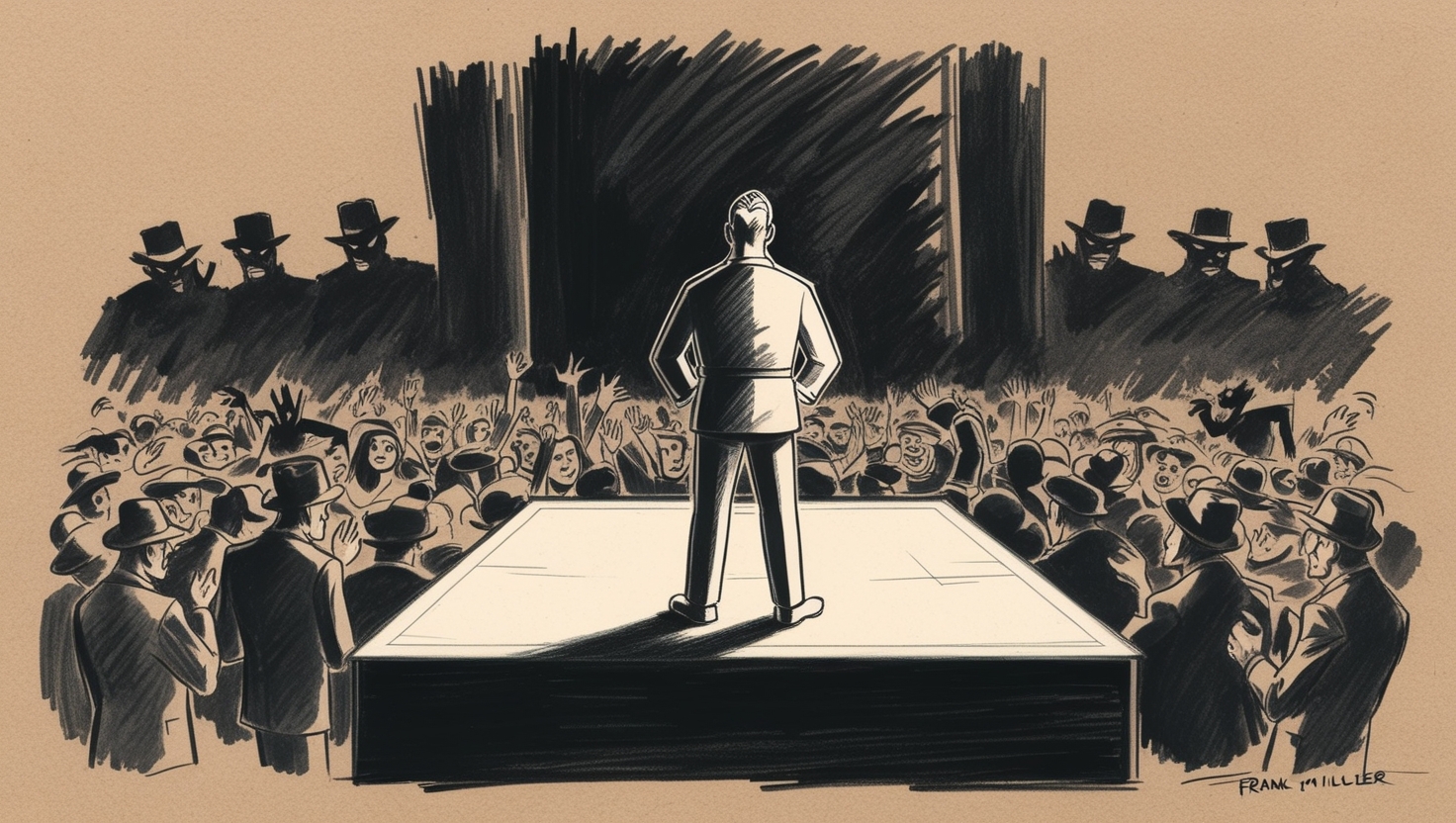John Mason was a name that would soon become infamous. A mid-level operative caught in the gears of a vast conspiracy, he had no idea that his ordinary life was about to be shattered. Unbeknownst to him, forces far more powerful than he could imagine were setting him up to take the fall for an assassination attempt that had shaken the nation to its core.
In a secure, undisclosed location, Thomas Ellison and his inner circle convened. The cyber disruption had worked flawlessly, creating chaos and diverting attention while Cipher and his team infiltrated critical systems. Now, it was time to solidify their plan by finding the perfect scapegoat. John Mason, with his connections to key suspects, was chosen.
Cipher, the brilliant tech advisor, displayed Mason’s file on a large screen. “John Mason is our guy. He has links to Senator Marcus Hale, Director Evelyn Reed, and Harold Brighton. Framing him will suggest that he was acting on their behalf. It’s perfect.”
Ellison nodded, his gaze cold and calculating. “We need to ensure the evidence against him is airtight. He must have no way to prove his innocence.”
Jackson Price, ever the realist, raised an eyebrow. “Mason is smart. If he suspects anything, he might dig in. We need to overwhelm him with evidence.”
Ellison’s smile was chilling. “We’ll plant everything we need. Emails, financial records, surveillance footage. By the time we’re done, John Mason will be the most hated man in America.”
The operation was set in motion. Cipher’s team meticulously planted evidence on Mason’s devices. Emails were fabricated, linking him to the purchase of firearms and plans for the assassination. Financial records were doctored to show transactions between Mason and shadowy figures connected to the plot. Surveillance footage was edited to place Mason at critical locations. Everything pointed to him as the mastermind behind the attempt on Ellison’s life.
Meanwhile, Rebecca Lang, Ellison’s media strategist, prepared the public for the bombshell revelation. Carefully timed leaks to the press hinted at a major breakthrough. Anonymous sources within law enforcement fed tantalizing details, building anticipation and ensuring that when the time came, the public would be ready to accept Mason as the villain.
Mason continued his daily routine, blissfully unaware of the storm about to hit. He returned home one evening to find a package on his doorstep. Inside, a single USB drive. Curious, he plugged it into his laptop and watched in horror as incriminating evidence filled the screen. Emails discussing the assassination, bank statements showing payments for weapons, and surveillance footage of him near key locations.
Panic gripped him. He knew he was being framed but had no idea who was behind it or why. Desperation drove him to call his contacts, but none answered. His accounts were locked, and his options dwindled. Packing a bag, he prepared to flee, but it was too late. As he opened the door, federal agents stormed in.
“John Mason, you’re under arrest for the attempted assassination of Thomas Ellison,” the lead agent declared.
Mason’s protests were futile. The media descended like vultures, capturing every moment of his humiliation. His face was soon plastered across every news outlet in the country, labeled as a traitor. The public’s outrage was swift. Protests erupted, demanding the harshest punishment.
In the days that followed, Mason was subjected to intense interrogation. Despite his pleas of innocence, the evidence was overwhelming. Every detail had been carefully crafted, leaving no room for doubt. Public opinion was against him, and the narrative was set. Mason was the mastermind, and his guilt was beyond question.
Ellison’s plan continued to unfold behind the scenes. Political rivals were discredited, their connections to Mason used to destroy their careers. Director Reed was forced to resign, her reputation in tatters. Senator Hale’s campaign collapsed under the weight of the scandal, and Harold Brighton’s corporate empire crumbled.
Ellison emerged as a hero. His speeches condemned Mason’s actions and vowed to lead the nation through the crisis. The public saw him as a resilient leader who had overcome a grave threat. His popularity soared, and his path to the presidency was clear.
Rebecca Lang ensured the media coverage was relentless. Every detail of Mason’s trial was dissected, reinforcing his guilt. The public’s need for a villain was satisfied, and Ellison’s image as a strong, decisive leader was cemented.
The trial was swift. Despite his defense team’s efforts, the fabricated evidence was insurmountable. Witnesses, coerced and manipulated, testified against Mason. The jury deliberated briefly before delivering a guilty verdict. The judge, swayed by public sentiment, handed down a severe sentence.
As Mason was led away, Ellison felt a surge of satisfaction. The plan had worked perfectly. The public had their villain, and Ellison had his victory. With his enemies neutralized, nothing stood in his way.
In the aftermath, Ellison’s campaign gained unstoppable momentum. He was no longer just a candidate; he was a symbol of resilience and justice. The public’s faith in him was unshakable.






